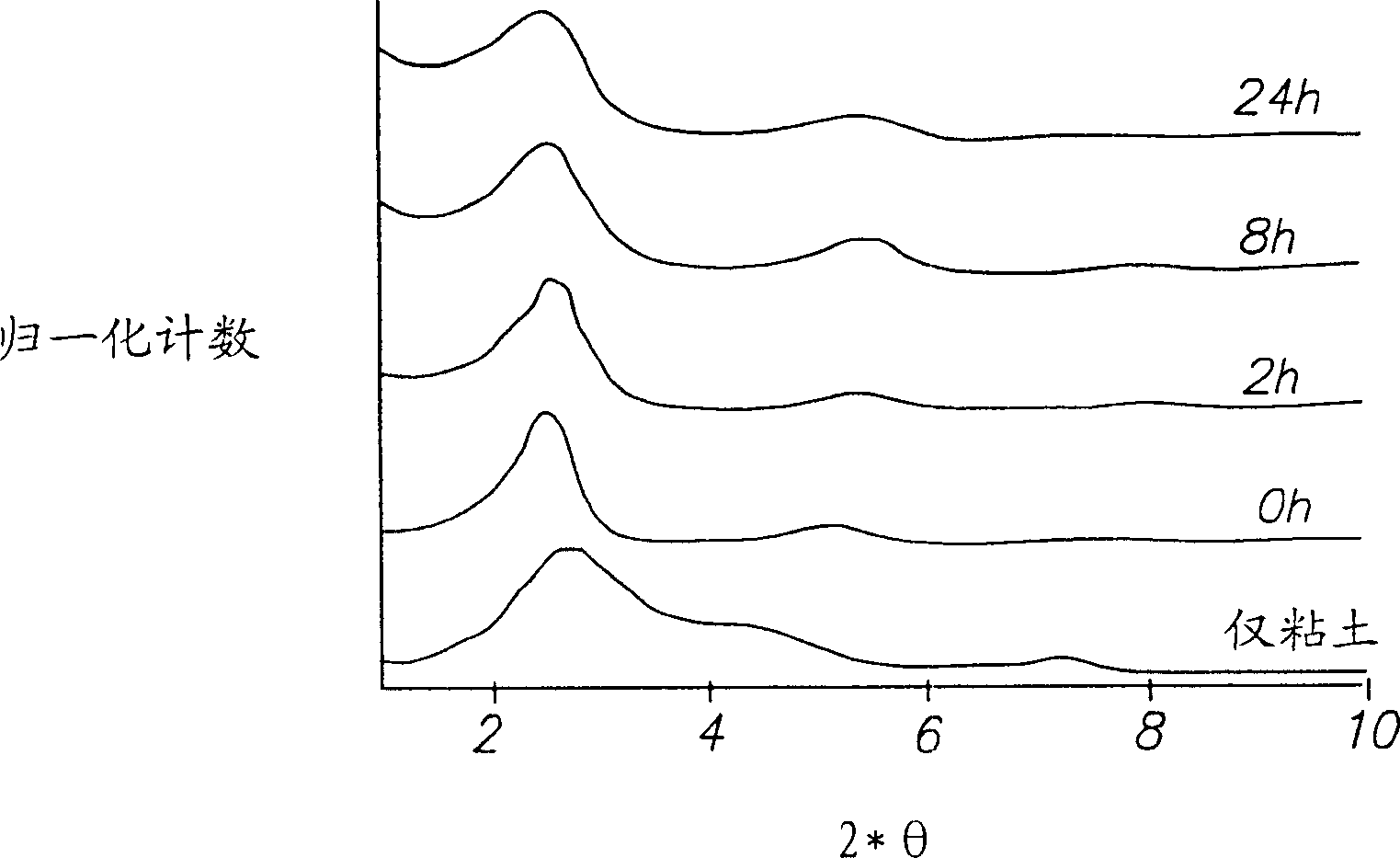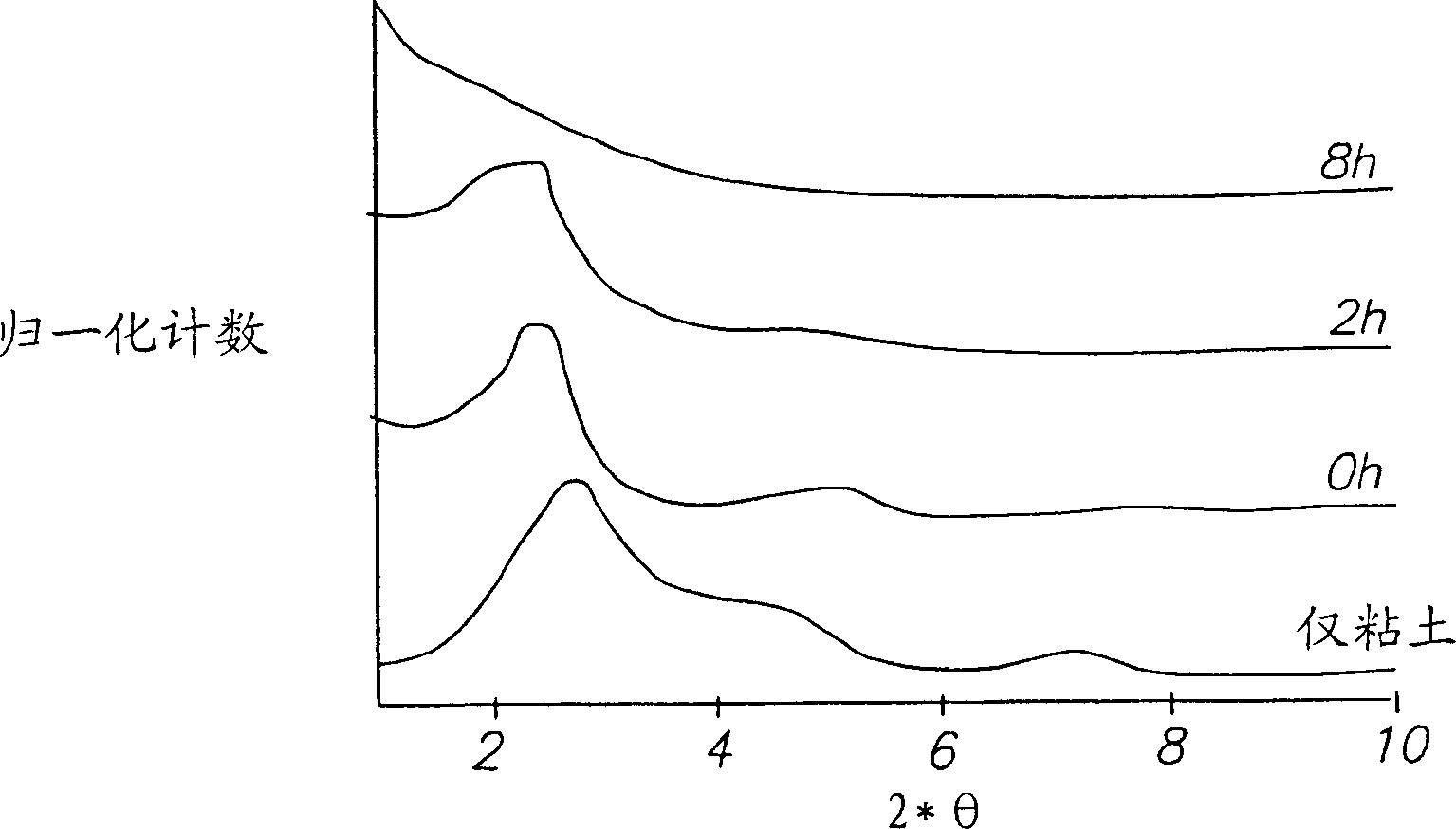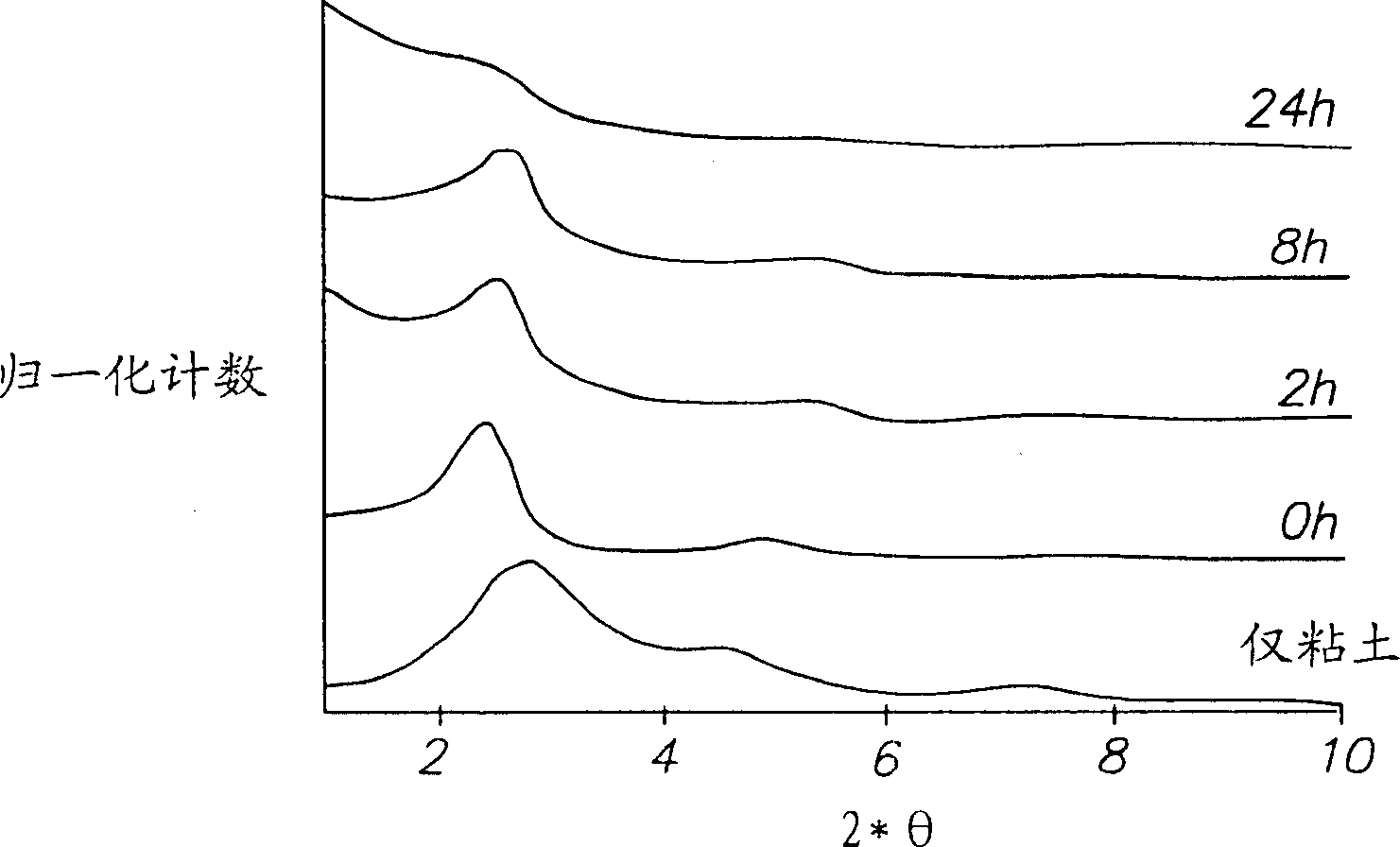Stripped polystyrene-clay nano-composite material containing star polymer
A technology of nanocomposite materials and star polymers, applied in nanotechnology, nanotechnology, nanotechnology, etc. for materials and surface science, can solve problems that are not commercially or economically viable, phase separation, and morphological variation
- Summary
- Abstract
- Description
- Claims
- Application Information
AI Technical Summary
Problems solved by technology
Method used
Image
Examples
Embodiment 1
[0086] This example illustrates the preparation of a pentafunctional initiator having the following structure:
[0087]
[0088] Initiator I
[0089]This compound is used to form the macromolecular core of the five-armed star polymer used in the compositions of the present invention by the following procedure.
[0090] Synthesis of 1-phenyl-1-octene:
[0091] A mixture of 95.0 g (0.466 mol) of iodobenzene, 100 mL of piperidine, and 400 mL of acetonitrile was degassed by bubbling nitrogen gas for 30 minutes. Bis(triphenylphosphine)palladium(II) chloride (3.27 g, 0.0047 mol) and copper(I) iodide (0.44 g, 0.0023 mol) were added and the mixture was mechanically stirred for 15 min while bubbling continued. Likewise, compound 1-octyne (56.4 g, 0.512 mol) was degassed separately and then added to the stirred reaction mixture at room temperature under nitrogen. The resulting mixture was mechanically stirred and warmed at 65 °C for 24 h, during which time it ch...
Embodiment 2
[0099] A decafunctional initiator having the following structure for forming the macromolecular core of the ten-armed star polymer for use in the compositions of the present invention was next prepared:
[0100]
[0101] Initiator II
[0102] The following steps are involved in the preparation of this initiator:
[0103] Synthesis of 4,4'-bis(phenylethynyl)biphenyl
[0104] A mixture of 12.0 g (0.030 mol) of 4,4'-diiodobiphenyl, 150 mL of piperidine, and 200 mL of acetonitrile was degassed by bubbling argon, then 0.40 g (0.6 mmol) of bis(triphenyl Phosphine) palladium dichloride and 0.25 g (1.3 mmol) of copper (I) iodide. To the resulting stirred solution was added via syringe 6.04 g (0.059 mol) of phenylacetylene at room temperature. The reaction mixture was kept at room temperature for 30 min, then heated at 60 °C for 3 h. The precipitated product was collected by filtration of the cooled reaction mixture and washed successively with acetonitrile ...
Embodiment 4
[0119] This example illustrates a general polymerization scheme for linear or star polymers.
[0120] Synthesis of linear or star polymers:
[0121]A flask was charged with the appropriate initiator (1 eq), copper (I) chloride (1 eq), 2,2'-bipyridine (2 eq), and monomer (150-9000 eq). Diphenyl ether is optionally added in an amount approximately equal to the weight of the monomers. The reaction mixture was evacuated and refilled with nitrogen five times. The reaction mixture was stirred at a temperature range of 80-120 °C for 18-72 h. The brown reaction mixture was diluted with tetrahydrofuran (THF) and passed through a short column of silica gel. The eluate was treated with DOWEX MSC macroporous ion exchange resin for 15 min and filtered. The solvent was evaporated under reduced pressure to give a viscous liquid which was poured into excess methanol to precipitate the polymer as a white solid. The product was collected and dried in a vacuum oven. The polymer passes 1 H...
PUM
| Property | Measurement | Unit |
|---|---|---|
| melting point | aaaaa | aaaaa |
| process yield | aaaaa | aaaaa |
| melting point | aaaaa | aaaaa |
Abstract
Description
Claims
Application Information
 Login to View More
Login to View More - R&D
- Intellectual Property
- Life Sciences
- Materials
- Tech Scout
- Unparalleled Data Quality
- Higher Quality Content
- 60% Fewer Hallucinations
Browse by: Latest US Patents, China's latest patents, Technical Efficacy Thesaurus, Application Domain, Technology Topic, Popular Technical Reports.
© 2025 PatSnap. All rights reserved.Legal|Privacy policy|Modern Slavery Act Transparency Statement|Sitemap|About US| Contact US: help@patsnap.com



